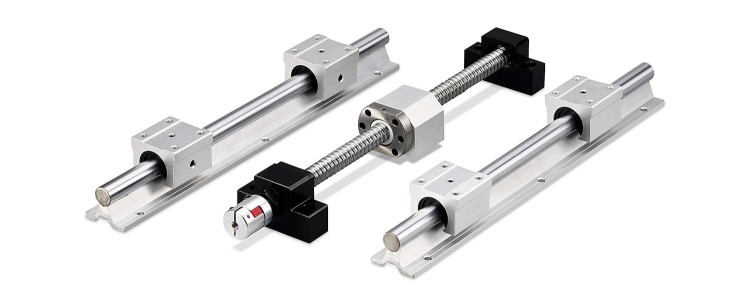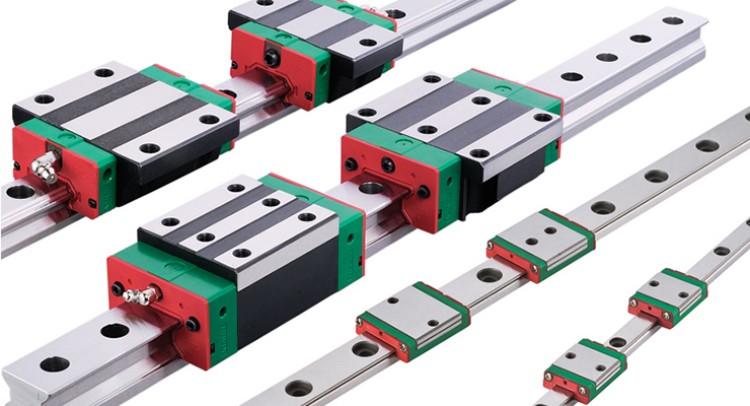Linear rails and blocks are indispensable parts in many mechanical equipment. They can provide directionality and stability during movement and provide support for the accurate movement of the machine. This article will introduce the movement principles of linear rails and blocks.
A. Types of linear rails and blocks
First, we need to understand the type of sliding guide. Sliding guides can usually be divided into three types: linear sliding guides, rotating sliding guides and spherical sliding guides.
1. Linear sliding guide rail: usually consists of two parts: a guide rail and a slider. The guide rail can be installed on a stationary structure, and the slider is in direct contact with the supported object. The slider controls the direction and supports the object by sliding on the guide rail.
2. Rotating sliding guide: Rotating sliding guide is a kind of guide rail that achieves rotation through support bearings and provides axial support at the same time. They are often used in mechanical equipment that require high speed rotation and accurate control.
3. Spherical sliding guides: Spherical sliding guides can provide higher load capacity and better movement accuracy than other guide rails. They consist of ball rollers, support sets and guide rails. The ball rollers can roll freely between the guide rails and support sets to provide support and movement direction control for the machine.
B. Working principle of linear rails and block
The movement principle of sliding guide rails can be summarized as the following aspects:
1. Friction: The movement of the sliding guide rail depends on the sliding and frictional forces of the object. These forces keep the object stable on the guide rail.
2. Shape matching: The shape of the sliding guide should match the shape of the object being supported, so that it can provide accurate direction and stability to the object.
3. Lubrication: Some types of guide rails require lubricants to reduce friction. Oil, grease or dry lubricants can reduce machine wear and repair costs.
4. Balance of forces: The design of the sliding guide rail must ensure the balance of forces between each part. For example, the coefficients of the guide rail and the slider must match to prevent the friction from being too high or too low, affecting the movement and accuracy of the machine.
C. Application scope of linear rails and block
Sliding guide rails are widely used in various mechanical equipment, including aircraft, cars, trains, industrial robots, etc. They can be used in many industrial applications such as manufacturing, electronics, medical equipment, etc. Sliding guides are also core components of many scientific instruments and test equipment.

Jinan Maolei Bearing Co.,Ltd. is china plain bearing supplier for high performance spherical plai...
Miniature ss bearings have many advantages compared with ordinary bearings.Miniature ss bearings ...
sealed ceramic bearings are more and more popular in recent years,they have many advantages compa...
Plastic POM bearing may be usually divided into plastic rolling bearings and plastic slippy beari...
An anti friction bearing that operates below slippery friction.The anti friction bearing works sw...
The clutch pilot bearing is that the 1st shaft guide bearing of the transmission.Between the engi...
Many people do not know the secret of hybrid ceramic balls bearings A. the rolling bearing consis...
Nylon bearings material with smart mechanical strength and wear resistance , appropriate for the ...